Hey friends! Time for a cozy stroll through Tinykin by Splashteam. This lovable collectathon arrived on August 30, 2022, thanks to tinyBuild. Steam reviews are glowing—and it’s easy to see why. Tinykin blends Pikmin-style strategy with relaxed platforming. What makes it special? The bubbly “soap skate,” vacuum float, and a crew of colorful bug buddies. Compared to other collectathons, it feels more welcoming and chill. The setting—a suburban home turned alien playground—adds warmth. That said, the map layout gets confusing at times. Still, exploring every corner brought me real joy.
Overall Impression
The gameplay is intuitive, the level design imaginative, and the atmosphere consistently whimsical and nostalgic. Whether you’re gliding on a soap bar through oversized rooms or commanding colorful Tinykin to solve puzzles, the game keeps things fresh, fun, and non-frustrating.
While there are a few hiccups—like some hard-to-track collectibles, occasional navigation clutter, and hit-or-miss pop culture references—none of these significantly detract from the joy of exploring its vibrant world.
The game feels like a love letter to childhood wonder, filled with clever details and friendly design choices that welcome all types of players. It doesn’t rely on combat or intense challenge, but rather leans into creativity, exploration, and charm. The emotional twist at the end and the nostalgic setting elevate it beyond typical platformers.
In short, Tinykin is a top-tier cozy platformer with just enough depth to keep things interesting and also just enough heart to make it memorable.

Gameplay Mechanics
Pros
You play as Milo, a tiny explorer in a giant house. From the start, the game’s core idea is easy to grasp: use five different types of Tinykin to solve puzzles and unlock new paths. Each type plays a specific role, and since they’re color-coded, it’s simple to keep track of their abilities. As you move from room to room, the smooth blend of platforming and light strategy creates a steady rhythm of progress and discovery that’s not just fun—it’s genuinely satisfying.
What keeps the gameplay lively is how each Tinykin brings something new to the table. For example, Purples are your muscle—they carry heavy objects and move bulky obstacles without breaking a sweat. Reds, on the other hand, bring the boom. They explode fragile barriers and free trapped allies in a flash. Then there are the Greens, who stack into helpful towers so Milo can reach high-up areas and hidden goodies.
As you dig deeper, the Blue and Yellow Tinykin mix things up even more. Blues act as walking wires, connecting power sources to machines and reviving all kinds of tech across the house. Yellows, meanwhile, stretch out into horizontal bridges—perfect for crossing wide gaps and linking platforms. With all these abilities combined, every puzzle feels fresh, and every solution is just the right mix of clever and fun.
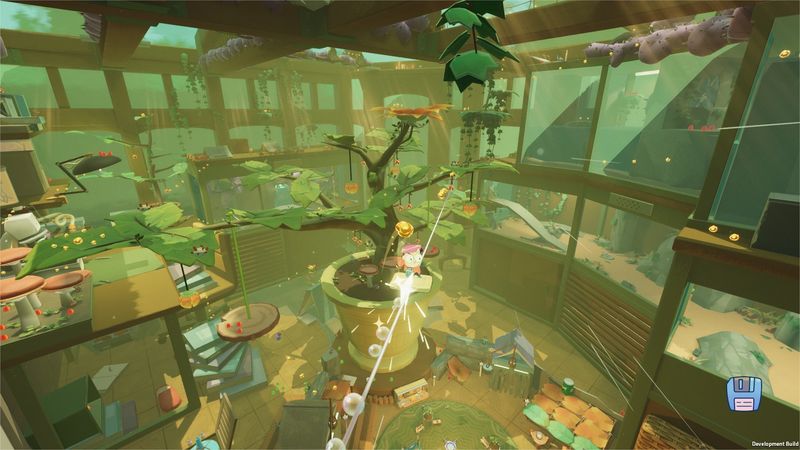
Standout Moment
Want a standout example of how playful the mechanics can get? One of my favorite bits happened when I had a purple Tinykin squad hauling a giant toolbox. To guide them, I dropped down arrow markers, and they followed along like the world’s cutest parade. No joke—it felt like I was conducting a tiny, adorable orchestra.
Then came the twist. Once the time trial update kicked in—with new unlockable tracks in each room—it totally changed the vibe. That fast-paced, “Tony Hawk’s Pro Skater” energy had me zipping through rooms, trying to perfect every run and collect every badge. It was addictive fun, and honestly? I couldn’t stop.
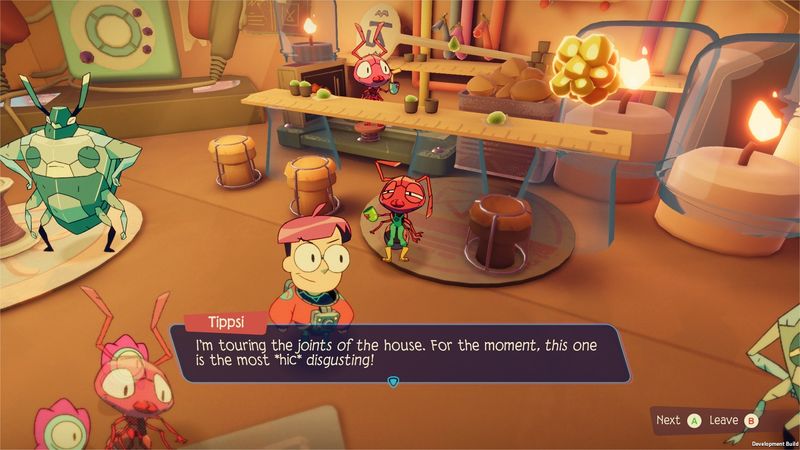
Cons
The binocular feature in Tinykin offers potential as a valuable exploration aid by marking bugs and side quests. However, its implementation feels under-emphasized. Markers often blend too seamlessly into the environment, making it easy to overlook important targets. Highlighting them more clearly or offering a toggleable zoom overlay could significantly improve the tool’s usability and enhance player awareness during scavenging runs.
While Tinykin’s level progression is built around gradually unlocking different tinykin abilities, early areas lack access to advanced mechanics like stacking or bridging. This design choice limits backtracking options, which may frustrate players hoping to revisit zones with a fuller toolkit. Offering shortcuts or optional routes unlocked later could make returning to earlier rooms feel more rewarding and less constrained.
Players aiming for 100% completion will find some challenges more tedious than expected. Hidden pollen and cleverly tucked-away tinykin often feel too obscure, making full completion difficult without external help. While this adds to the game’s exploratory charm, integrating optional hints or a collectible tracker in later updates could make the experience more accessible for dedicated fans.
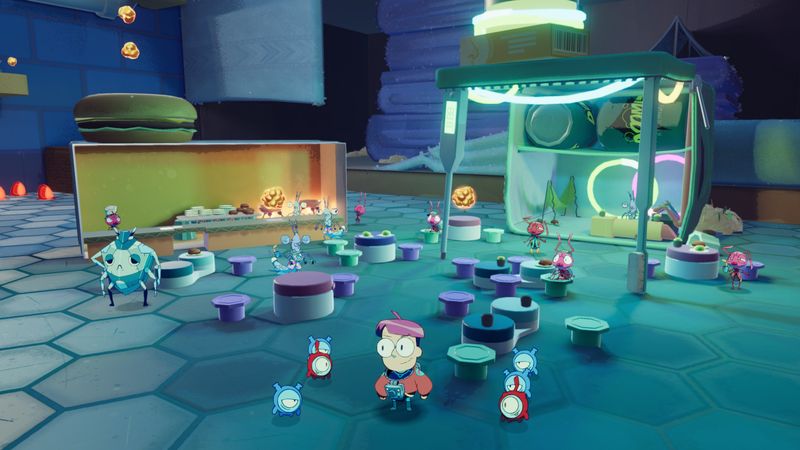
Story and Characters
Tinykin tells a sweet and simple story. Milo wants to return home and grow to normal size. Along the way, you meet lots of bugs with funny lines and short quests. A love-sick duo named Jack and Rose made me laugh (though the Titanic joke felt a little too obvious). Remy, a food-loving bug who runs a café, had some of the best lines. These pop culture nods are hit or miss.
Still, I loved how each bug group helped Milo find ship parts. The ending caught me off guard with a heartfelt moment. It reminded me that even lighthearted games can deliver real emotion. The world is packed with ‘90s vibes—VHS tapes, old TVs, and chunky gadgets. Exploring felt like digging through Grandma’s attic, in the best way.

Visuals and Graphics
Tinykin is bright, playful, and packed with charm. From the moment you start, Milo’s nerdy little face is front and center—even in third-person—which adds to the game’s quirky personality. Every room feels like a handcrafted diorama made of everyday objects and natural elements. Giant snacks, toy bricks, leafy plants—it’s like someone turned a cluttered house into a whimsical playground.
Even better, the character animations bring everything to life. Tinykin scurry around with so much energy, I actually found myself pausing just to watch them go. It’s that kind of delightful detail that makes exploration extra rewarding.
That said, not everything hits the mark. Some pop-culture jokes, while meant to be clever, felt a bit forced. For example, a “House” reference in a bug hospital took me out of the experience. Honestly, more original winks—or none at all—would mesh better with the game’s unique style.
Sound and Music
Let’s talk audio—because Tinykin nails it. The soundtrack hums with chill guitar tunes and soft beats that perfectly match the game’s easygoing vibe. It never overwhelms the scene, but it’s always there setting the tone in a low-key, pleasant way.
And then there are the sound effects, which truly shine. From the swoosh of the vacuum to the soft skittering of your Tinykin to the satisfying grind of soap skating—every sound adds a layer of joy. Dialogue sticks to bug gibberish and text boxes, which actually works well. It keeps the pace breezy and avoids any awkward voice acting. Overall, the audio choices help create a relaxing, focused atmosphere that’s hard to step away from.
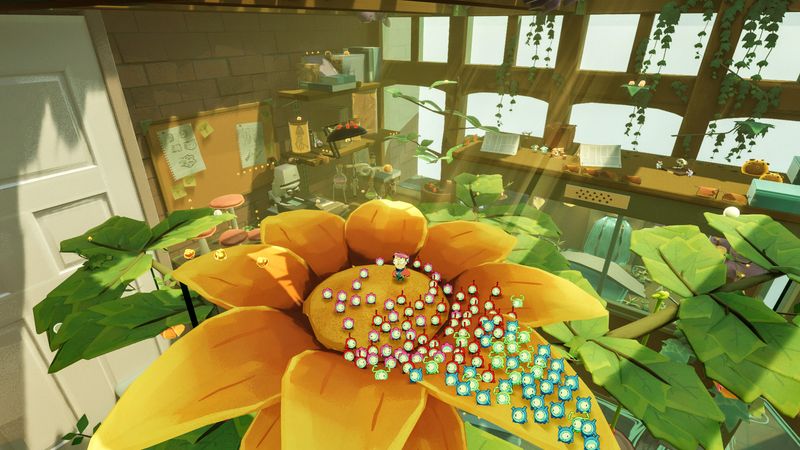
Difficulty and Replayability
Now here’s where Tinykin really sets itself apart—it refuses to stress you out. There’s no combat, no punishing mechanics, and no ticking clock. Water’s your only real hazard, and even then, respawns are almost instant. That low-pressure design makes it super approachable for players of all ages and skill levels.
As for replay value, there’s a lot to love. The game offers two main goals: full completion and time trials. Going for 100% unlocks outfits and achievements—great motivation for collectors. And time trials? They deliver Platinum badges in each room, and let me tell you, they’re addictive. I kept jumping back in just to shave off seconds and grab more badges. It was pure, recharge-your-brain fun.
Still, not everything’s perfect. Some of the last pollen and hidden Tinykin are really well-hidden—borderline frustrating. I had to turn to YouTube to track down the stragglers. Honestly, adding a radar or collectible sensor would be a game-changer for anyone chasing that perfect finish. Fingers crossed a future update includes something like that.
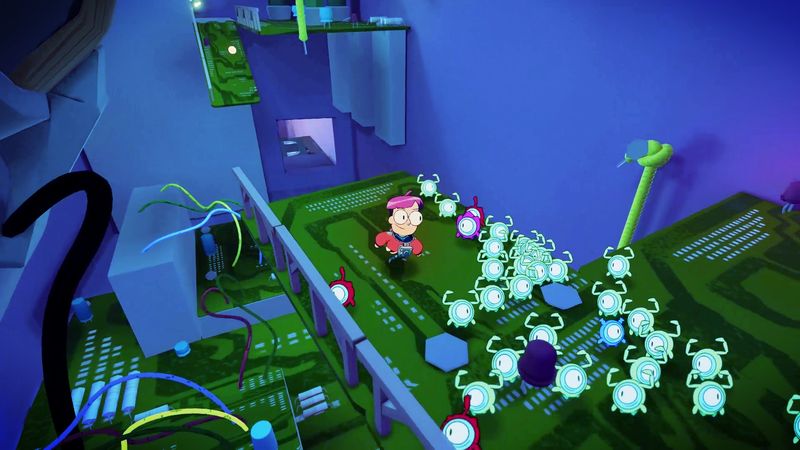
Trivia & Behind the Scenes
Now for the fun stuff behind the curtain—Tinykin was developed by Splashteam, a small but passionate indie studio based in Montpellier, France. Even though the team’s size is humble, their experience shines through. A few members previously worked at a Nintendo Service Center, which helps explain the smooth, polished feel of the gameplay. It’s that sweet spot between indie creativity and professional-level finesse.
On the publishing side, tinyBuild stepped in to level things up. They helped fund the addition of voiceovers, which gave even more charm to the quirky characters spread across the game’s oversized world. More recently, they supported the big time trial update—giving us fresh reasons to dive back in and fine-tune our skills.
And here’s something cool—since the time trials dropped, the game has caught the attention of the speedrunning community. Fans are already sharing paths, tricks, and shortcuts. Watching that grassroots excitement grow shows how tight the level design and controls really are. It’s become an unexpected gem among speedrunners.
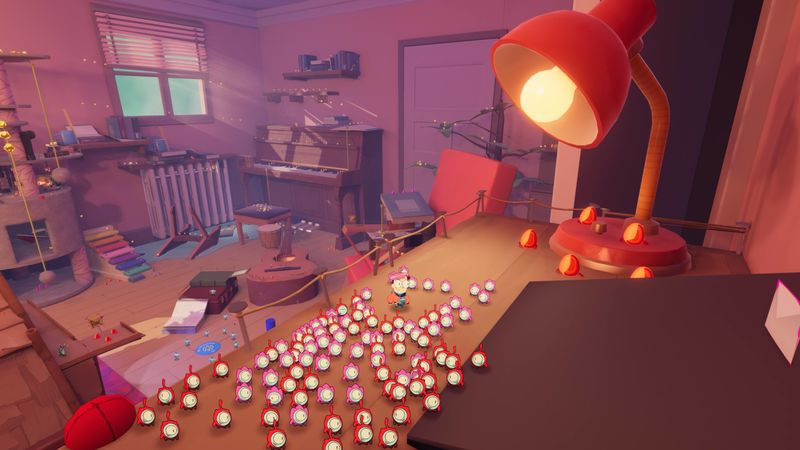
Final Thoughts and Rating
Tinykin nails cozy vibes, fun mechanics, and friendly difficulty. Sure, a few things—like map clutter or pop-culture jokes—don’t quite land. But honestly? The lovable tinykin crew and clever level design kept me smiling the whole time. If you’re looking for a chill, delightful adventure, give Tinykin a spin. It’s one of the best collectathons I’ve played—and I don’t even call myself a completionist!
Rating: 4.5 out of 5 stars

